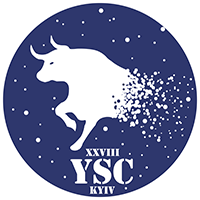Speaker
Description
Toroidal (or ring) structures are quite common objects in the Universe. For example, these are obscuring dust tori in active galactic nuclei (ANGs), protoplanetary and accretion disks, ring galaxies, etc. In some objects, where the torus can be massive enough, it affects the motion and dynamics of matter. N-body simulations of the torus in the field of the central mass show that the equilibrium cross-section of the self-gravitating torus can take an elliptical (or oval) shape depending on the initial conditions (Bannikova et al. 2011, 2021). All these facts motivate the study of the gravitational potential of toroidal bodies. This is important to understand the dynamic in such a kind of astrophysical objects and to develop the theory of gravitational potential as a whole.
This work is devoted to the study of the gravitational potential of a torus with an elliptical cross-section in the outer region (outside the volume of the torus) for an arbitrary ellipticity parameter. We use an integral expression for the gravitational potential of the elliptical torus which is valid at an arbitrary point (Bannikova et al., 2021). This expression was obtained by the following method. We consist the torus of a set of the massive circles. In this case, the torus potential is a sum of the potential of the massive circles. Such consideration allows us to obtain the approximate expression due to expand the potential of component ring in a Maclaurin series in the vicinity of the center of the elliptic cross-section. Restricting ourselves to terms of the second order, we expressed the outer potential of the elliptic torus in terms of the potential of the massive circle located in the equatorial plane with a radius equal to the torus major radius. The obtained approximate expression for the outer potential of the torus is valid in a wide range of cross-sectional ellipticity parameters. One of the interesting results is the representation of the potential of the elliptic torus via two massive circles located at some distance from the foci of the cross-section. We obtained the corresponding approximate expression for this case. The good agreement between the approximate expressions for the outer potential of an elliptic torus and the exact integral expression is confirmed by the corresponding error maps.
Bannikova E.Yu, Sergeev A.V., Akerman N.A., Berczik P.P., Ishchenko and Capaccioli M. 2021, MNRAS, 503, 1459
Bannikova E.Yu., Vakulik V.G., Shulga V. 2011, MNRAS, 411, 557
